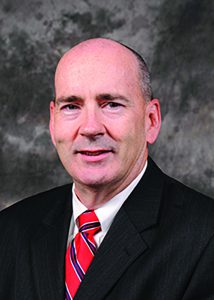Stability and profitability remain elusive as capacity remains abundant
By Joseph S. Harrington, CPCU
How long can this go on?
After experiencing five straight years of double-digit losses in its industrywide combined ratio, commercial auto liability insurers saw an improvement to “only” 107.1 in 2020.
Then, after 42 straight quarters of rate increases, according to the Council of Insurance Agents and Brokers (CIAB), commercial auto liability insurance approached break-even with a combined ratio of 101.4 in 2021, while the combined ratio for the line as a whole dipped below 100, according to The NAIC 2022 Annual Report on the U.S. Property & Casualty and Title Insurance Industries.
Had the line finally turned a corner? Nope. Not yet.
In October 2023 the A.M. Best Co. reported that the combined ratio for commercial auto liability and physical damage stood at a distressing 105.4 in 2022. The latest results reflect three key factors whose future impact is hard to discern:
Reductions in expense ratios, which won’t necessarily continue
Worsening results in physical damage coverage, a function of the growing costs of auto repair
Adverse loss development from previous years, which should abate over time—maybe.
However you look at it, it’s no more clear today than for the past 10 years whether and how commercial auto insurance will achieve a stable and profitable equilibrium.
Pandemic mirage

“The stabilization the previous two years was a bit of a mirage,” says Nick Saeger, assistant vice president for transportation products and pricing for Sentry Insurance. “Frequency declined with the pandemic, as fewer vehicles were out on the roads. That said, the crashes that did occur tended to be more severe as the vehicles were travelling faster. So much of the decline in frequency was erased by increases in severity.
“At the same time, none of the factors built into social inflation have really abated,” he adds. “There’s been no decrease in attorney involvement in claims, or in litigation financing, or in nuclear verdicts. With frequency returning and severity never really abating, rates need to keep up, and the industry hasn’t gotten ahead.”
Things haven’t been much better with commercial auto physical damage experiences, according to Saeger. Automakers have barely begun to recover from pandemic-induced supply chain disruptions, which led to shortages of computer chips, which depressed production of new vehicles, which drove up the cost of repairing existing vehicles.
“And again,” he says, “all this has happened as accident frequency was returning to pre-pandemic levels.”
In response, Sentry relies on data-driven underwriting and pricing discipline while maintaining its overall level of exposure. “We want to continue to be a provider for the largest segments of the industry, from single unit owner-operators to large motor carriers,” Saeger says.
Limited appetite

For Nationwide, underwriting and pricing discipline also are “paramount,” according to Dennis McGuire, casualty underwriting director. “We are maintaining a disciplined approach across all aspects of the underwriting process,” he says. “This extends to risk selection, loss analysis, driver evaluation, vehicle use, vehicle classification, and loss control.”
Beyond that, McGuire says that Nationwide has “refined its overall exposure by exiting underperforming accounts and segments.” The company accepts that “some appropriately priced accounts in lower performing segments have moved to other carriers.”
Reflecting a trend among commercial insurers, Nationwide is showing “a limited appetite” for writing commercial auto coverage on a monoline basis, McGuire says, adding that “when commercial auto is the dominant line in a multi-line account, we scrutinize the auto exposure very closely.”
As for the response by insureds, McGuire finds that “auto liability limits have remained stable, while we have seen upward movement in deductibles, as some customers have chosen to retain more risk.”
Saeger also finds insureds willing to accept higher deductibles while seeking to maintain or increase their limits of coverage.
“As far as limits go, we haven’t seen a significant change,” he says. “While federal regulations require interstate carriers to have at least $750,000 in personal injury coverage, in most cases motor carriers are purchasing $1 million or more in coverage.
“On the deductible side, we’re having success with larger deductibles for motor carriers who are willing to bet on their safety practices and share the risk, which serves to defray some of those upfront premium costs.”
Telematics is no panacea
for [commercial auto], however,
especially at a time when factors in the operating
environment—high fuel costs, driver shortages,
and rising accident costs—overwhelm the ability
to manage the cost of risk.
Strong capacity

If profitability remains elusive with disciplined underwriting and larger retentions, part of the problem is the number of new carriers and new programs entering the commercial auto insurance market.
“New carriers are jumping into transportation and keeping capacity at near record highs,” reads the 2023 US Transportation Outlook, published in September 2023 by Risk Placement Services (RPS), a distributor of specialty insurance products. As a result, the report finds that “downward pressure for transportation insurance [pricing] is greater this year than it has been since [the] COVID [pandemic].”
“We can’t, as an industry, continue to raise rates just because losses are climbing. We have to find new ways to offset those losses,” said Mark Gallagher, RPS vice president of national transportation, in the 2023 Outlook.
To that end, commercial auto insurers continue to push their insureds to utilize advanced vehicle telematics to gather real-time data on the operation of vehicles and the performance of drivers. Sentry Insurance, for example, recently announced a partnership with a telematics provider called Motive. According to Saeger, “The data gathered can be used to enhance motor carrier safety programs, but it has potential insurance applications, such as generating first notice of loss, to name just one.”
For its part, Nationwide also “leverages our business auto loss control expertise to develop online resources for use by safety managers and drivers across a wide variety of fleets,” says McGuire. Among other things, Nationwide provides sample fleet safety manuals for insureds to use as the basis of their own safety guidelines.
Telematics is no panacea for the line, however, especially at a time when factors in the operating environment—high fuel costs, driver shortages, and rising accident costs—overwhelm the ability to manage the cost of risk.
“Too often, customers are sharing data and not seeing much of a premium reduction on their bill,” reads the RPS report. Even if telematics identifies important trends in fleet operations, the report notes that “if you aren’t able to act on those insights, you aren’t going to get much use out of that data.”
Nonetheless, McGuire urges agents and brokers to help their clients understand the “profitability challenges” of commercial auto insurance, and to emphasize how important effective fleet management is for limiting losses and minimizing the cost of coverage.
“The best answer is to be experts in the field,” says Saeger. “We work with agents who know the products and coverages necessary to keep our insureds on the road.”
For more information:
Nationwide
www.nationwide.com
Risk Placement Services
www.rpsins.com
Sentry Insurance
The author
Joseph S. Harrington, CPCU, is an independent business writer specializing in property and casualty insurance coverages and operations. For 21 years, Joe was the communications director for the American Association of Insurance Services (AAIS), a P-C advisory organization. Prior to that, Joe worked in journalism and as a reporter and editor in financial services.





